2023 Nissan Ariya Hands-On Preview: 5 Things We Learned About Nissan's Next EV

It’s important to note that Nissan was one of the first legacy automakers to really take EVs seriously.
The original Leaf debuted in 2010, and has gone on to sell over half a million units globally. It was a product of its time, and for the second act, Nissan has stuck to that recipe, which in this decade means a roughly compact crossover-sized package. The 2023 Nissan Ariya EV is the Japanese brand’s entry into a quickly expanding segment, one filled with strong competition in the shapes of the Ford Mustang Mach-E, Hyundai Ioniq 5, and Volkswagen ID.4. And of course, the Tesla Model Y.
SEE ALSO: 2022 Hyundai Ioniq 5 First Drive Review: The Future is NowWhat lessons has Nissan leveraged from the Leaf experience for its high-riding EV? What can this handsome crossover offer that its competitors are lacking? AutoGuide was invited to go hands-on with a Japanese-market Ariya at a recent event—as well as check out the upcoming 2023 Z sports car—and we came away impressed. Here’s what we learned about the 2023 Nissan Ariya:
Right-Sized Footprint
If you pull out the measuring tape, you’ll find the Ariya fits right in with the new batch of mainstream EV crossovers. At 182.9 inches (4,645 millimeters) in length, the Ariya is fractionally longer than the Ioniq 5, and about in the middle of the ID.4 (180.5 in / 4,585 mm) and Mach-E (186.0 in / 4,724 mm). It’s wider than them all, at 74.8 inches (1,900 mm) across.
What you might not expect is that the Ariya is actually slightly stubbier than Nissan’s own Rogue. It’s true—and it’s lower, too. The rakish roofline and extended wheelbase make the Ariya seem larger than it is, however. Nissan has also kept the styling clean, with precious few creases and curves along the flanks.
The most defining part of the design is the nose. The front graphic is distinctly Nissan, with a shield-shaped non-grille, thin headlights, and chevron-shaped daytime running lights. Move back and around, however, and there’s little that screams “Nissan.” There are fewer new cars not doing a full-width taillight than are, for example. Nonetheless, the Ariya is a handsome shape, especially in the copper color it debuted in. This Japanese-market unit sits on 19-inch wheels; 20s will be optional. When the Ariya comes here, beyond the obvious swap to left-hand drive, it will also ditch the second roof fin and extra CHAdeMO charge port.
No front trunk
One of the benefits of ditching an engine is opening up the front third of the vehicle for storage. Not the case with the Ariya: Nissan has opted to fit the climate control system up front, which allows for a thinner dashboard design.
It’s not as if the Ariya is exactly lacking in storage space. Front-drive models will store 16.5 cubic feet (467 liters) in the cargo hold, while AWD versions drop that figure to 14.6 cu-ft (413 L). Of course, the rear seats fold flat to more than double the available loading space.
SEE ALSO: Ford Mustang Mach-E vs Tesla Model Y ComparisonStunning EV interior
The decision to ditch the frunk has allowed Nissan to design a low-profile dashboard, which gives the Ariya a mobile lounge feel. Drop into the front seat and there’s acres of space in all directions, and sightlines are excellent. Switch to the back seats and, at least on first impression, there’s enough room for three adults. If I had to guess, rear legroom should be a competitive 38.0 to 40.0 inches (965 to 1,016 mm). The flat floor helps, and makes ingress and egress easier, too. So it’s roomy—this is an EV, after all.
Nevermind the numbers. Nissan has used color and texture in a way few EVs have so far, and the result is a space that I’d be happy to spend time, even parked. This example has a blue and copper color scheme, a look Nissan Canada reps confirmed will be making the trek across the Pacific. The soft suede and stitching looks and feels more luxury than anything sister brand Infiniti is putting out. That it extends to the door panel is a nice touch, too. The copper is used sparingly, with a thin sliver bisecting the dashboard, and hiding the vents.
Then there’s the long plank of open-pore wood. Normally, I’d prefer physical buttons to touch-capacitive ones. But look at those integrated climate controls! So cool.
A pair of 12.3-inch high-definition screens handle infotainment and instrumentation duty. Nissan has stuffed the system with all manner of features: wireless Apple CarPlay, wired Android Auto, Amazon Alexa, over-the-air (OTA) updates—it’s all here. There’s the usual wide-ranging suite of driver assists, including an automatic parking assist.
SEE ALSO: Nissan Pathfinder vs Volkswagen Atlas ComparisonOther welcome interior touches include the patterned ambient lighting, and extending the blue leather and suede to the rear doors. It’s touches like this that elevate the Ariya’s interior above the rest of the competition.
More power than rivals
The Ariya will come in two flavors at launch: a single-motor, front-drive setup, and the dual-motor “e-4ORCE” top trim. America will see only the larger 87.0-kWh battery pack, while Canadians will also have the option of a 63.0-kWh pack. With the latter, the Ariya will be good for 214 horsepower and 221 pound-feet for the entry-level Engage trim, and 335 hp plus 413 lb-ft for the Evolve. These Canada-only options have single-charge ranges of 346 and 330 kilometers, respectively.
With the larger battery, buyers can expect 238 horsepower and 221 lb-ft with the single-motor Ariya. That places the Ariya ahead of the Hyundai, Kia, and Volkswagen, though all of them are rear-drive. Meanwhile, the dual-motor model boasts 389 hp and 442 lb-ft, right at the front of the pack. Only the performance-oriented Mach-E GT out-powers the Ariya. Range varies, from 265 miles (426 km) for the AWD model, to a full 300 miles (482 km) for the mid-level Venture+ trim.
Power is nice, but there’s another race that matters in the EV space: charge speed. The Ariya is capped at 130 kW, which suggests a top-up time of as little as 40 minutes for the larger battery. That’s a slightly better max rate than the ID.4, but down a bit from the Mach-E, and far behind the Korean duo’s 350-kW rate.
SEE ALSO: 2021 Volkswagen ID.4 Review: Coming Full CircleReservations now open
The day after we checked out the Ariya, Nissan opened up reservations for the EV. There will be six grades in Canada at launch, though we’ll have to wait a little longer to know specific pricing. Expect Ariya pricing to roughly align with the Ford.
In America, buyers will have the choice of four grades, all with the larger battery pack. The entry-level Venture+ will start from $47,125, including destination but before any sort of rebates. From there, the grade walk includes the Evolve+ ($50,125), Premiere ($54,625) and Platinum+ e-4ORCE AWD ($60,125).
Become an AutoGuide insider. Get the latest from the automotive world first by subscribing to our newsletter here.

Kyle began his automotive obsession before he even started school, courtesy of a remote control Porsche and various LEGO sets. He later studied advertising and graphic design at Humber College, which led him to writing about cars (both real and digital). He is now a proud member of the Automobile Journalists Association of Canada (AJAC), where he was the Journalist of the Year runner-up for 2021.
More by Kyle Patrick



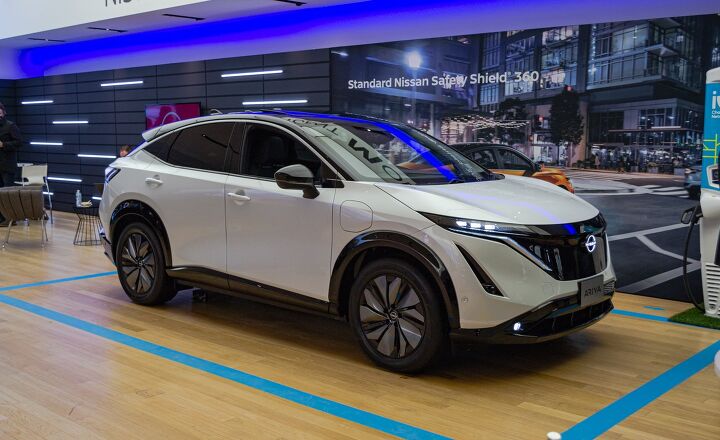






















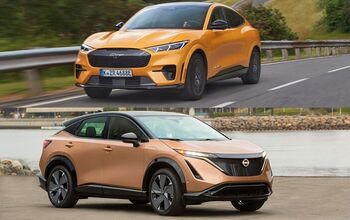


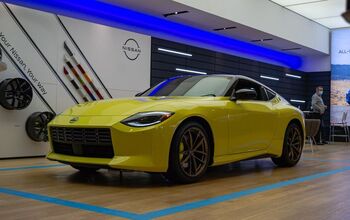




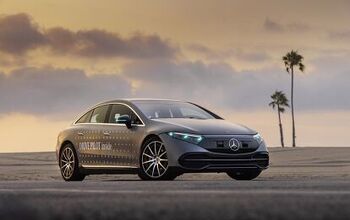

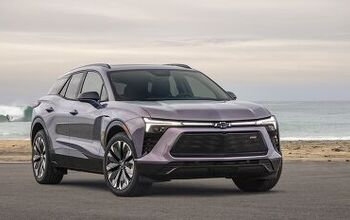


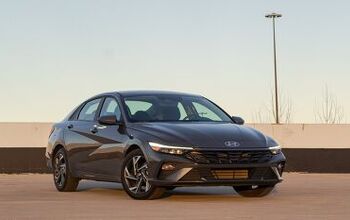

Comments
Join the conversation
I am excited to acquire a unit. Nissan Ariya is my first option for buying my first EV. I am from Puerto Rico and like to know when it arrives on my Island.